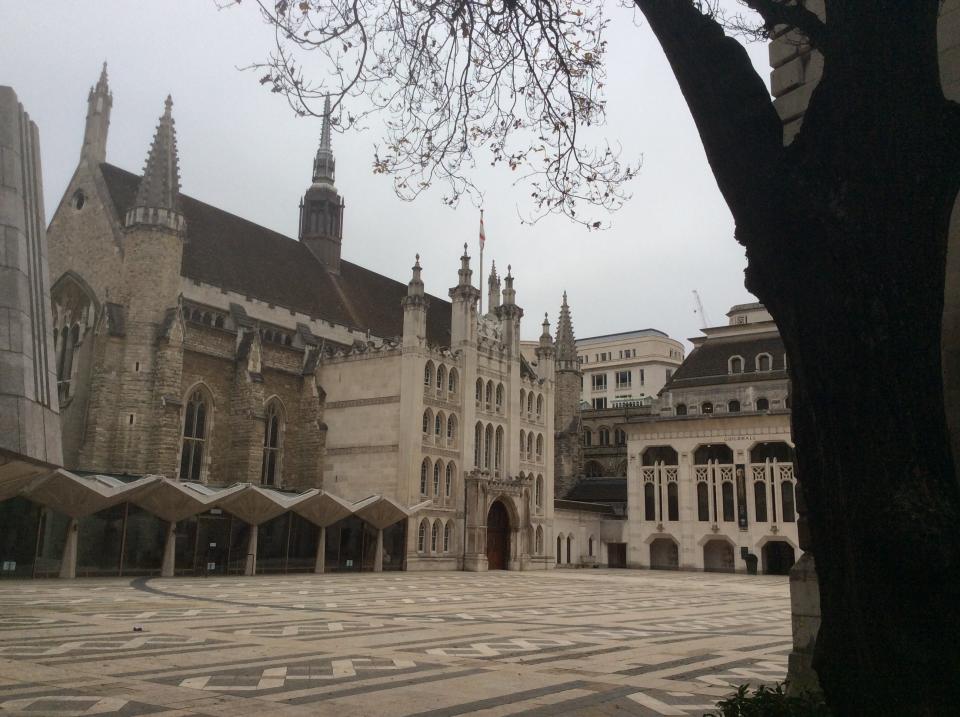London’s secret gardens, hidden in the heart of the City

London might seem a strange place to get away from it all, especially in these Coronavirus-afflicted times, but there are few places quieter than the City of London outside office hours - or during office hours at the moment, come to that. The Square Mile is home to well over 100 ‘Secret Gardens’, hidden down medieval alleys and under the noses of skyscrapers. If you go on a weekend it’s entirely possible you won’t bump into another soul, let alone a tourist.
Just off Great Tower Street are the remains of a 12th-century church, St Dunstan in the East. It has been rebuilt several times, particularly after the Great Fire, but after the Blitz it was transformed into the most picturesque ruin imaginable. Always well planted, the high walls give shelter to palm trees that give the garden a tropical feel.
The centre of the old church now has a modern fountain with eight wooden benches set around it in circular fashion, but there are other more secluded spots to sit inside and outside the church walls. Hidden away to one side is the entrance porch, a magical and secret place to sit looking up to the sky through ivy covered walls.
For something more thought-provoking, head north for five minutes to the other side of Great Tower Street, where you’ll find Fen Court Gardens. At one time Fen Court used to be a churchyard and there are still a few chest tombs scattered around that give character to the modern garden. Trees and benches provide contrast with the surrounding skyscrapers, but the star attraction here is the Gilt of Cain sculpture. Dedicated to the Abolition of Slavery in 1807, the piece was opened by none other than Archbishop Desmond Tutu at the start of the century, and features columns around a central podium that is engraved with lines from Lemn Sissay’s moving poem: “Cash flow runs deep but spirit deeper. You ask Am I my brother’s keeper?”
If a mix of Romans and minimalism is your thing, then Guildhall Yard off Gresham Street is 15 minutes’ walk away, past the glorious Royal Exchange and Mansion House. Only discovered in the 1980s, this is the location of the Roman Amphitheatre, or mini-coliseum, for what was once Londinium. You can see a black oval outline in the paving that illustrates its original position and, best of all, you can visit the underground remains for free in the adjoining Guildhall Gallery.

Centuries ago this was a Jewish part of the City and, as such, the church here is named St Lawrence Jewry. It was completely rebuilt after the Blitz and is spectacular inside, while on the outside it is that most rare of things in the City: a water garden with luscious green lilies and rushes. Watching the dragonflies come and go can be very soothing.
Postman's Park, five minutes’ walk to the west past the wonderful St Albans tower on Wood Street and the sunken gardens of St John Zachary, is an entirely different prospect again.
So named as the park is over the road from what was the General Post Office building, the park looks narrow from the Aldersgate Street entrance, hemmed in by the Presbyterian church on the right. But the pathway leads to a small fish pond with brightly colour Koi carp. A church window near the pond has a figure of John Wesley, who encountered the Holy Spirit nearby - an event that was instrumental in the creation of the Methodist Church.

As you head past the pond, the park reveals itself in all its expansive glory. A formal flowerbed sits in the centre, surrounded by majestic plane trees and gently undulating grassy slopes.
The real attraction of Postman's Park is the Memorial to Heroic Self Sacrifice. Composed of a series of glazed ceramic tiles, each detailing the heroic but tragic death of an every-day person while saving the lives of others, the memorial was erected after Victorian George Frederick Watts spent decades campaigning the authorities for humble heroes to be recognised.
Carry on through the park, with its banana trees and dense shrubs, towards West Smithfield.
The old gatehouse to St Bartholomew the Great Church and the oldest residential house in the City, with its first floor windows etched with famous signatures, are worth checking out. The walls of the ancient St Bartholomew Hospital are studded with memorials to events that took place here: the farmers’ scythes and pitchforks of the Peasants’ Revolt up against the swords and axes of the King’s men. It’s inscribed with words we still remember today: “When Adam delved and Even span, who was then the gentleman?”.
A few feet away, religious martyrs that were burned at the stake are also officially remembered, along with William ‘Braveheart’ Wallace who was Hung, Drawn and Quartered here. Craters in the hospital walls hail from more recent times: a devastating Zeppelin attack in WW1.

Across the circus you’ll see Smithfield meat market, something that was no doubt handy to executioners and merchants alike. In front of the market sits a small rotunda garden with a statue of ‘Peace’ as the centrepiece.
The park itself is encompassed by mature trees and shrubs, with a lawn and a good selection of seating making this very naturally quiet corner of London positively tranquil. Pick a bench near the shrubs for a sheltered spot to settle down with a good book and only the distant bells of St Pauls to remind you that you’re in the heart of London. There is no better way to spend a few hours.
Stephen Liddell is the author of Secret Gardens of the City of London.
Read more

